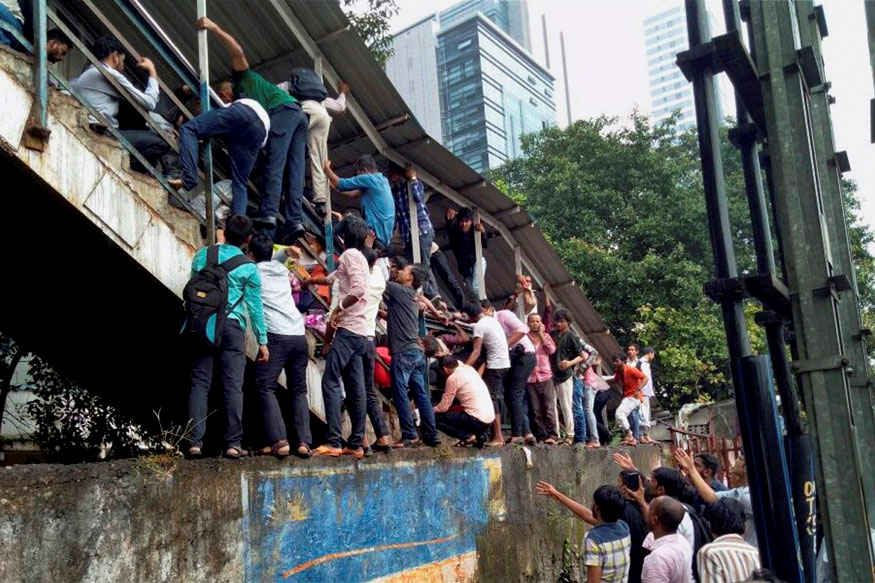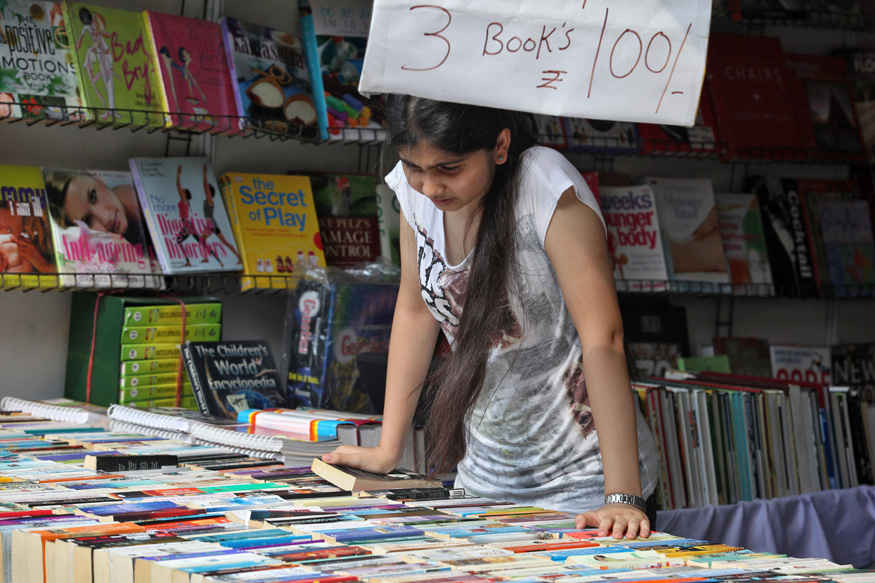
Suburban Railway systems, like everything else for the Indian Railways, is overstretched by decades of underinvestment, which is one of the prime cause of the stampede on a foot overbridge at Elphinstone station — that led to the loss of 22 lives and injured over 30 — is a tragedy that was waiting to happen.
Changing ministers won’t prevent Elphinstone-like tragedies in the future. If one sacked a Railway Minister after each train or railway infrastructural accident, one would probably need a dozen new ministers every year. Watching the horrific scenes of the railway bridge stampede in Mumbai’s Elphinstone Station, we have to hang our collective head in shame.
For a government that supposedly believes in the Reaganomic mantra, ‘The government has no business to be in business’, with its own ‘Minimum government, maximum governance’ mission statement should show the courage to implement the Debroy Committee report on Railways released in 2015. It is fortuitous that Bibek Debroy, recently appointed as head of the Chief Economic Advisory Council to the PM, has spelt out detailed recommendations on reforming and overhauling the Indian Railways.
Politics aside, one of the major recommendations by the Debroy Committee is to separate the infrastructure of the railways from passenger train and freight operations, and make the infrastructure – tracks, signaling, etc – open to the private sector with a common user facility for a fee to infuse competition.
The Indian Railways, like the other ‘Navaratnas’, is a classic case of crony socialism. In the name of an ideology to help the poor, large resources are allocated through subsidies, huge government-owned corporations are created, and the people in power control these assets and resources by appointing their cronies to the boards of these organisations.
The Indian Railways is a huge dinosaur that offers employment to a little over 1.3 million people who live off government fat without accountability. The system fiercely opposes competition and tries to vigorously perpetuate itself. Its killer trains are unsafe — at any speed — and the tracks, compartments and railway platforms are hardly fit for use. Everything seems creaking, ancient, rickety and broken. Fixing footbridges is akin to applying a band aid to a lifethreatening wound.
The interest of the nation and the welfare of a 1.25 billion people cannot be mortgaged to pander to the wishes of lobbies with vested interests.
Prime Minister Narendra Modi must bite the bullet. Killer trains and murderous platforms will continue to take their toll, and more tragedies like Elphinstone are bound to recur if only ministers are changed but not the systems. The time has come to immediately commence deep structural reforms and usher in the private sector in phases, taking care that private sector monopolies are not created.
All cushions have been exhausted, including land for building additional tracks. The situation has been exacerbated by the lack of an overarching authority that looks at transport needs of a new development and how it can be provided.
The case of converting land available after closure of mills into office and commercial space is illustrative. It increased the burden on an overloaded suburban train system, which was then left to the Indian Railways (IR) to address.
IR has been doing its best to cope with the increasing demand for movement resulting from expansion of the central business district in the south, rather than dispersing across all areas. This has forced people to travel from their homes in the north to their places of work in the south.
As the demand for suburban transport has grown, IR has been adding new lines. Most of the network has four lines and a part of it even has six lines. It cannot add any more lines for lack of land for building tracks.
IR has also been increasing frequency of services and length of trains. It runs over 2,000 trains daily, with a 3-minute gap between trains. Over 7 million passengers use the suburban railway every day. The Railways has now reached a situation where adding more trains is problematic.
The result of the relentless increase in demand is that coaches are carrying nearly 16 persons per square metre, which is just not possible without people hanging from the coaches and falling off.
Nearly 20 people die every day falling from trains or crossing the tracks. No one talks about this though it has been happening for years. The stations need revamping, including foot overbridges. But there is no money to replace some of this over-age infrastructure as was brought out by the reply of the then railway minister Suresh Prabhu to an MP requesting replacement of this foot overbridge.
The problem has now reached a stage were IR is also a victim — of policies that have not coordinated land development with transport creation. Expecting the Railways to be able to provide enough transportation to meet the demand without massive injection of capital for revamping the system is being unrealistic.
An inquiry course has to be held in accordance with the Railway Act. But this will not go beyond immediate occurrence and, therefore, leave the problem unresolved.
To address the major challenges arising from existing shortfalls in the transport network — the results of decades of underfunding and the huge population and employment growth over the years — requires a political commitment to look at the ecosystem, develop the best strategies and investment programmes to support turning Mumbai into a world-class metropolis, meeting its economic and social objectives, as well as transport needs for the next 25 years.
IR is at the receiving end but that is being a bit unfair. The Railways management is professional and doing its best in a challenging environment created by lack of money.
The tragic accident has placed the ball in the minister’s court.
The only way to solve this problem to have consistent political direction in creating an arrangement at the highest political level, which coordinates land development and provision of transport of all types. Creation of funding mechanisms that provide for replacement of over-age infrastructure of the Railways by a modern system that can meet the needs of the city for the next 25 years and the rest of the Railways is also needed.
There is, of course, an immediate need to replace old, dilapidated foot overbridges and encroachments, which should be done immediately.
(Railway minister) Piyush Goyal has the challenging task of finding a way around the conundrum of increasing demand, lack of capacity and no money to create new capacity. The advantage he has is that the Railways management is capable of implementing, if he can provide the funds and political support where required.













